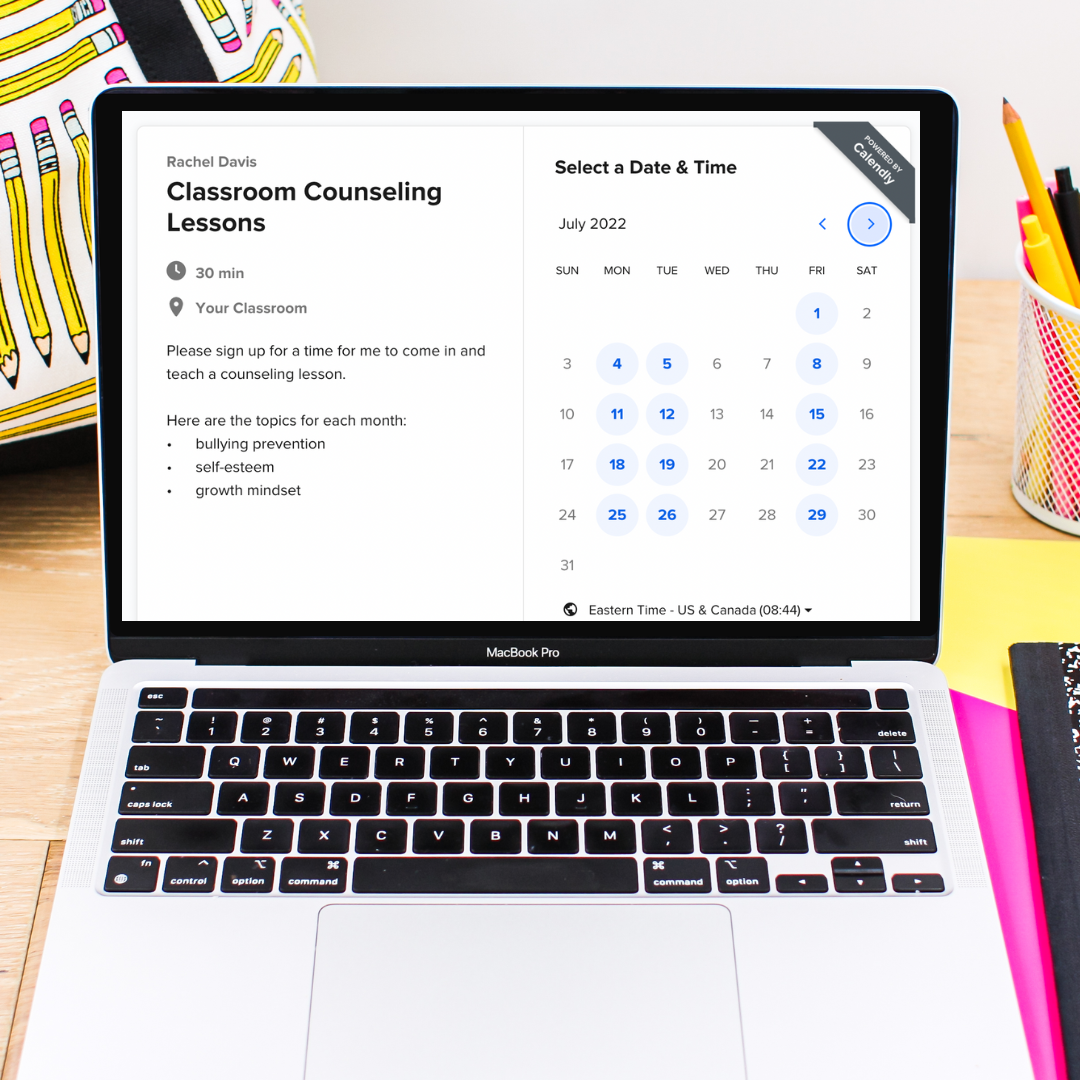5 Strategies for Stress Free Scheduling
Taking control of your schedule can lower your stress, increase your impact, and help you get the recognition you deserve. In this blog post I shared why mastering your schedule and time management skills is important, now I want to share with you some easy how-to strategies!
1. Batch Communication
Batching is doing multiple tasks at once to save time. In terms of communication, I'm referring to email, phone calls, and possibly even meetings! These are must-dos, but they don't have to dominate your schedule and leave you feeling like your brain has too many tabs open.
Do you keep your email open all day? I've been guilty of this before too. Keeping it open allows you to easily get distracted and waste time by unimportant things in your inbox (your favorite stores, news, etc). Even if you only have a work email open, you're getting a ton of emails from different lists. (elementary, specialists, committee, district-wide, etc)
How to Batch Respond to Emails
Set a time block on your calendar to answer email, start with about 15 minutes. You may be answering and waiting for a reply but don't keep it open all day. Check back during your designated email window. I recommend doing it at the start of your day. Sit down with a bagel and coffee and get to work batching! You can then check it a second time to close out your workday. And at lunch, if you must! But that's it. No more than 3 times per day.
A big part of helping with this distraction is by eliminating notifications. If you feel more comfortable having your work email on your phone that's okay, but only check it during your designated times!
Set Clear Communication Guidelines and Boundaries with Email
Set a boundary of when you check your emails with your colleagues and with parents. Tell them 'I answer emails between XYZ times', or 'You can expect to hear from me within X amount of hours'. You can mention this in person or post it on your counseling website or permission slips along with your contact information.
You can even use your email signature to show the hours you are on campus and available! This is a game-changer if you are part-time or on multiple sites. This clear communication prevents people from thinking you are unresponsive or flaky.
Do not check work emails during weekends and evenings. Practice self-care by drawing a hard line when it comes to your time. Sound harsh but it's efficient!
How to Batch Phone Calls
Like email, batching your phone calls will save your schedule and sanity.
Set Clear Boundaries
Set boundaries with parents to let them know when you are available. You can set up your voice mail to say when you're returning calls, and then set up a triage system to specify if it's urgent. Try not to say 'I'm flexible, when is best with you?' when someone wants a phone meeting. Avoid the back and forth communication yo-yo. It is time-consuming and not efficient.
Set a Schedule
Decide the time you will be returning calls and then block it off on your schedule, do not schedule any lessons, small groups, or individual sessions during this time. It can be grouped with email or separate depending on how many phone calls you get.
2. Schedule in a Planning Period
Teachers get a scheduled planning period. Why can't you?!
You may find that you don't have time to plan engaging lessons and groups. Finding a video, planning an activity, and putting together a PowerPoint is a lot of work!
You may not need a planning period every day, but a few times a week can really make a difference. This is way better than after-hours planning.
It takes a mindset shift
Like I mentioned in this blog post, sometimes a mindset shift is necessary when establishing new habits and routines.
Respect your own time. Know your value and worth. You deserve a planning period.
This is a win/win for everyone involved:
-
It doesn't take away from your personal time with family and friends
-
Your students deserve top quality work and you wont be able to deliver it when working in the fringe hours
3. Have Teachers Sign Up for Class Lessons
I set up this system of teacher sign-ups and love it! I have used it at multiple schools for multiple years. Taking the time to do the legwork upfront helps you avoid the back and forth yo-yo and eliminate the logistical nightmare of trying to plan everything individually.
Tech Tools for Teacher Sign-Ups
Google Sheets: List available times and share the sheet with teachers so they can fill in their ideal times. Set this up in August and have them sign up for the entire year!
Google Calendar: Use a Google Calendar (or Outlook) to create an event for the class lessons. This sends the teacher an invitation. Simplify the process further by using a recurring calendar invite. Note: Keep holidays in mind when scheduling to avoid confusion.
Calendly: This is a free website where teachers can sign up for appointments with you. It is super user friendly on both ends. You write in your available times and it does the rest for you! It syncs with your calendar to keep consistent scheduling.
The initial set-up for teacher sign-ups can be time-consuming, but it's way better than feeling stressed and crunched for time throughout the year. Plus you are likely seeing less kids in August so it's a good time to get your systems in place before referrals start coming in.
4. Establish a Crisis Response Team Protocol
A Crisis Response Team Protocol helps rid that feeling of constantly putting out fires, and divys up the responsibility.
As the counselor, you are likely skipping scheduled events to deal with unexpected ones. Ex: 'How can I teach a lesson on friendship when a fight is happening?!'
Having a Crisis Response Team Protocol respects everyone's time. Preventative class lessons are a part of your job! And you need to prioritize times that you have committed to teachers.
Team Vs Protocol
The Crisis Response Team
The team consists of people who can help when a student is in crisis.
Potential team members include the School Psychologist, Instructional Coach, Behavior Specialist, and the Principal.
The Crisis Response Protocol
The protocol determines who is responsible at which time and what actions will be taken.
Start by mapping out the day. Different people are responsible for different times. Color coordinate your calendars to indicate who has each shift. Hopefully, there wont be a crisis every day, so you can use this time to plan, do observations, or tackle that to-do list.
Things to consider:
-
Stay flexible and treat it as a case by case basis. You can sub out different people dependent on who has the best relationship with the child.
-
Get creative with team members. One of my schools even used our custodian!
5. Schedule Recurring 8 Week Sessions with Individual and Groups
I love using Google Calendar to schedule students. Once I find out the ideal day and time to meet with a student after talking with their teacher, I make a reoccurring appointment on my Google Calendar. I usually have it repeating for 6-8 weeks for individual students and 8 weeks for groups.
Students function on expectations and meeting consistently sets students up for success. Progress trackers are a great tool to help students know what to expect.
Your students deserve a standing appointment. This makes them feel that their time is respected and that their progress matters to you. This is super important if meeting virtually as well as you are likely to have more no-shows.
A consistent and clear meeting time respects everyone's time.
Schedule in buffers for no-shows and have a make-up window available. Be flexible, if you have a no show you can plan for class lessons or potentially respond to a crisis!
Why is taking control of your schedule important?
-
Clearing space in your schedule allows you to maximize your impact by seeing more kids. Time you previously spent sending emails and scheduling class lessons can now be used to help students.
-
Showing staff and admin that your time is valuable helps get your position (and you!) the recognition you deserve.
Download my Stress Free Scheduling Freebie for more detailed examples on how to implement these strategies!
SHARE:








